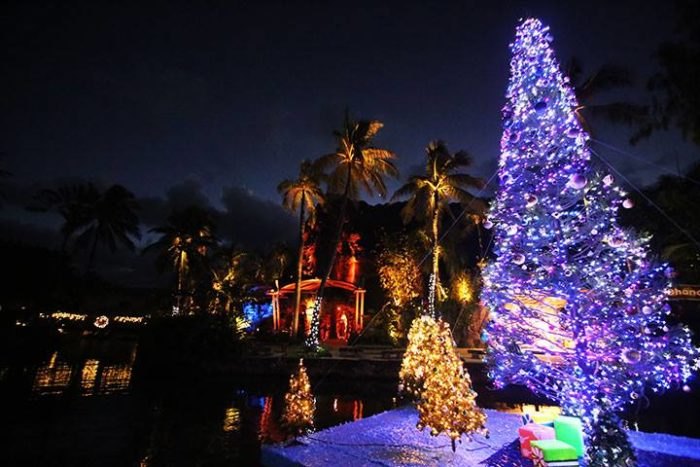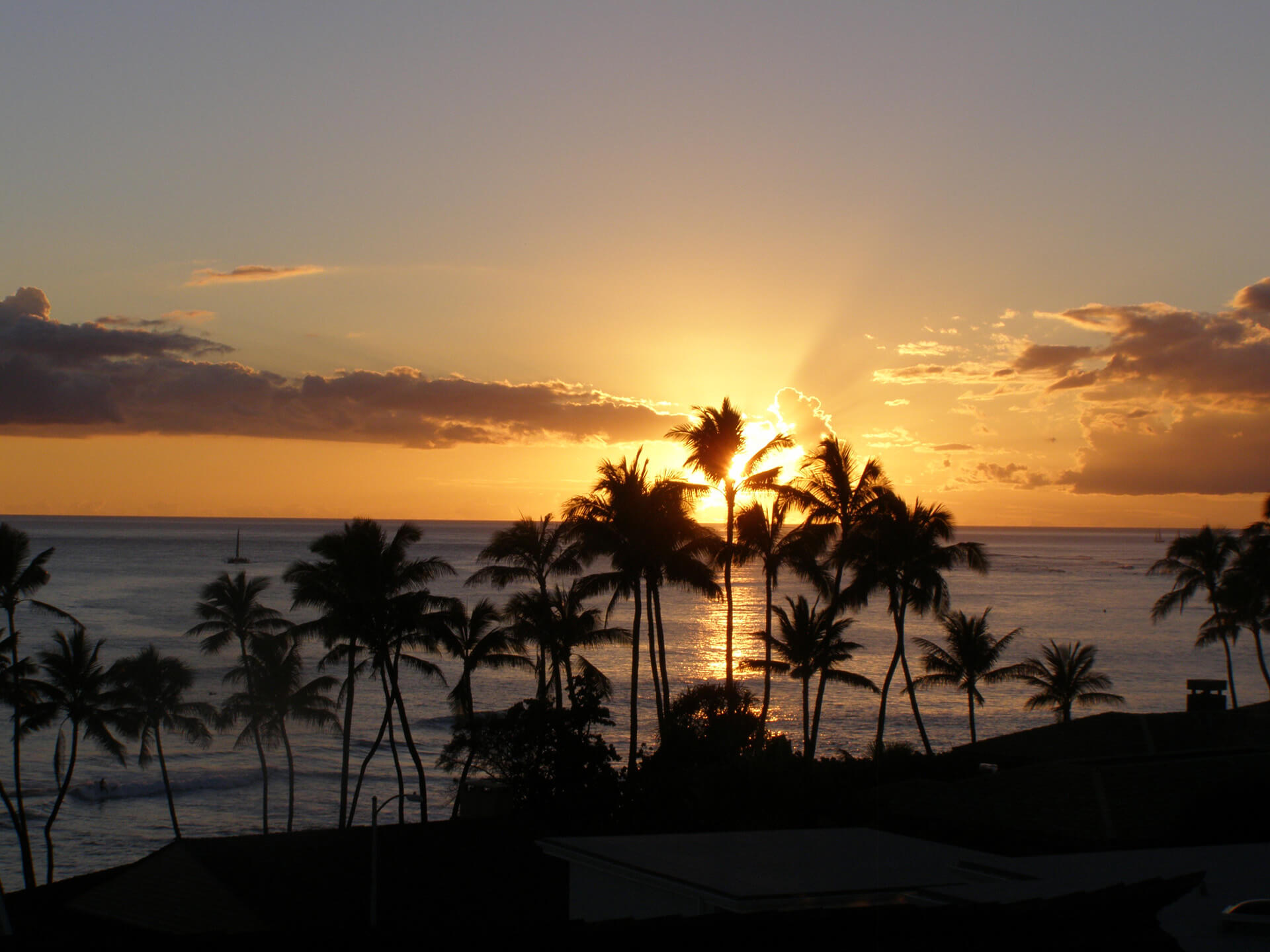Hawaii’s Climate – Year Round Comfort
Ever wonder why some people consider Hawaii a tropical paradise. Well our climate certainly is a contributing factor. Below you can learn more about why we can get away with wearing “baggies” (swim trunks) and “slippers” (flip-flops) for most of the 365 days in a year.
The ocean surrounding the Hawaiian Islands supplies plenty of moisture and acts as a giant thermostat, moderating the temperatures over the island chain. The seasonal range of sea surface temperature near the island chain is only about six degrees. The temperatures from a low of 74 degrees between late February and March to a high near 80 degrees in late September or early October. The variation from day to night is only one or two degrees.
Because the island chain is more than 2,000 miles from the nearest continental land mass, air that reaches it, regardless of its source, has been greatly modified by the equable ocean. Thus the air temperature range varies only eight degrees between the warmest months (August and September) and the coolest months (January and February), and about twelve degrees between day and night.

Daily maximums run from the high 70’s in the winter to the mid to upper 80’s in the summer, except near 90 in urban areas such as Waikiki. No worries…all our properties are air conditioned. Daily minimums run from the mid 60’s to low 70’s. The extreme highs for all of the islands are in the mid 90’s and the extreme lows are in the low 50’s.
The Terrain
Hawaii’s mountains profoundly influence its weather and climate. The endless variety of peaks, valleys, ridges, and broad slopes cause marked variations in temperature, wind speed and direction, cloudiness, and rainfall. Mountains reach heights of nearly 14,000 feet on the Island of Hawaii, 10,000 feet on Maui, 5,000 feet on Molokai, 4,000 feet on Oahu, and 5,000 feet on Kauai. Since temperature decreases with elevation by up to five degrees per thousand feet in dry air, Hawaii’s mountains encompass a climate range from tropical to sub-arctic.
Nature’s Air Conditioner
The northeasterly trade winds prevail throughout the year (although they may be absent for days or even weeks at a time), and result from the semi-permanent Eastern Pacific High which is usually centered to the north and east of the Hawaiian Islands. The average frequency of the trades varies from more than 90% during the summer to only 50% in January. These trades also tend to be stronger in the afternoon than at night. Winds from the southerly quadrant often occur when extra tropical low pressure systems also referred to as kona lows, are located north of the islands. In places sheltered by terrain, local air movements vary with the prevailing winds.
Annual Rainfall

Annual rainfall in the Honolulu area averages 20-25 inches along the coast, but increases to 35 inches about a mile inland, and to 60 to 70 inches about 2 miles inland. In the mountain areas where warm moist air is forced to rise, cloudiness and rainfall are much greater than over the nearby open sea. Waikiki being a leeward area, where the air descends, tend to be sunny and dry. Parts of the Koolau Range average 300 inches or more of rain a year. East (windward) of the Koolaus, coastal areas receive 30 to 40 inches. Oahu is driest along the coast west of the Waianaes, where rainfall drops to about 20 inches a year. However, variations from month to month and year to year are considerable. This is true more so during the cooler season when occasional major storms provide much of the rain.
In summer, rain occurs primarily as showers that form within the moist trade winds as they override the mountains. Thus March rainfall at Honolulu International Airport has ranged from more than 20 inches to as little as 1/100th of an inch. About half of the airport’s mean annual total occurs during its three wettest months, November through January. Trade wind rainfall is more frequent at night. Daytime showers, usually light, often occur while the sun continues to shine a phenomenon referred to locally as “liquid sunshine”.
Hazards
Hawaii is not without its share of hazardous weather. Being a small island chain in the middle of the Pacific puts us at risk for tsunamis. Hurricanes threaten our islands from May to December. Our wet season usually results in some level of flooding. An active volcano on the Big Island is responsible for earthquake activity throughout the year. The volcano also provides prolonged periods when volcanic emissions, known as vog. The vog gets blown over the island creating a thick haze which can aggravate asthma. Again, having an air conditioned place, helps when the vog is thick.






